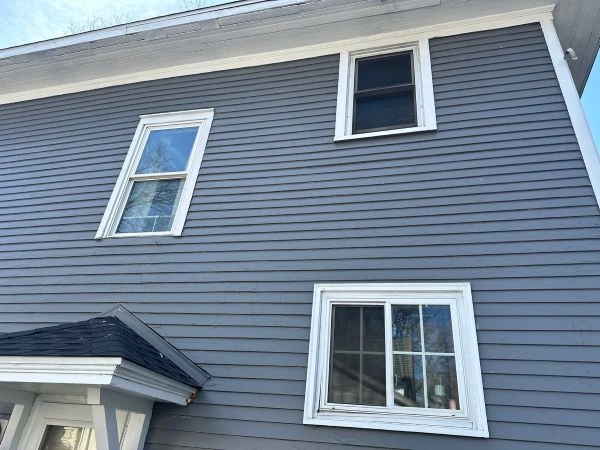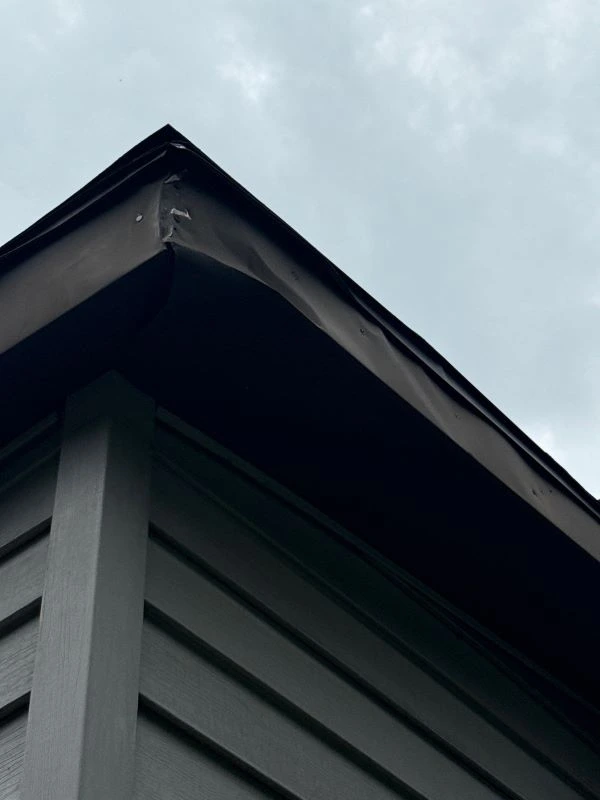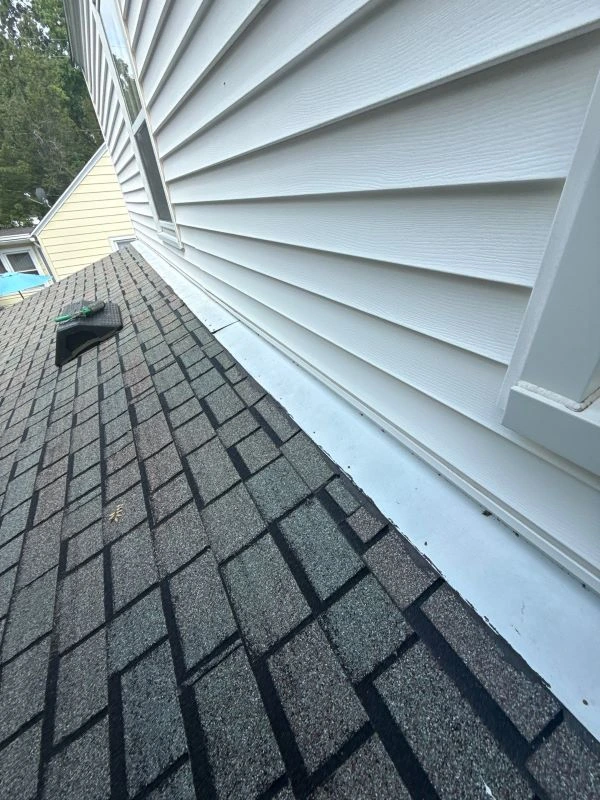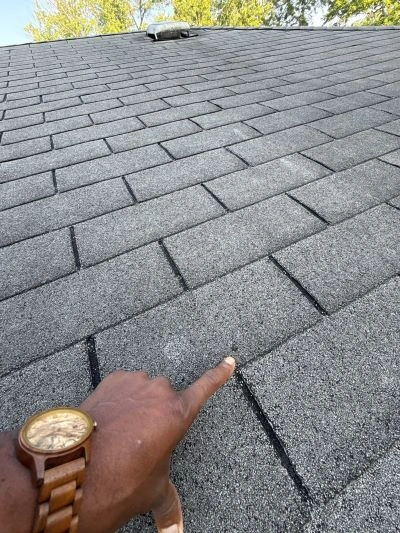Top Roofing and Siding Maintenance Tips for Every Season
Keeping your home’s roofing and siding in excellent condition is one of the most important steps you can take to protect your investment. Seasonal maintenance ensures that your home remains safe, energy-efficient, and beautiful all year long. At Worthy Construction LLC, we’ve seen how regular upkeep saves homeowners thousands of dollars in costly repairs. In this comprehensive guide, we share the top roofing and siding maintenance tips for every season, helping you keep your property in peak condition.

Spring Roofing and Siding Maintenance
Spring brings warmer weather but also heavy rains and strong winds. After winter’s freeze-thaw cycles, your home’s exterior needs special attention.
- Inspect for Winter Damage
Look for missing shingles, cracked siding panels, or ice-dam damage. Winter often weakens materials, and early repairs prevent leaks from spring rains. - Clean Gutters and Downspouts
Clogged gutters cause water to back up under roofing or seep into siding. Remove leaves, twigs, and debris to ensure water flows away from your foundation. - Check Flashing and Caulking
Examine the flashing around chimneys, skylights, and vents. Reapply caulking around windows and siding edges to prevent water infiltration. - Power Wash Siding
Mold and mildew often develop during damp winters. Power washing restores siding’s appearance and stops damage before it spreads. - Schedule a Professional Inspection
Spring is a great time to call a professional siding contractor or roofing expert to spot hidden damage that homeowners might miss.
Summer Roofing and Siding Maintenance
Summer heat and thunderstorms create unique challenges for roofing and siding.
- Check for UV Damage
Prolonged sun exposure fades siding colors and deteriorates asphalt shingles. Look for warping, cracks, or brittle materials. - Trim Trees and Vegetation
Branches that scrape against siding or roofing cause scratches and punctures. Keep trees trimmed to reduce storm damage risks. - Seal and Paint Wood Siding
Summer’s dry weather is ideal for sealing or repainting wood siding, protecting it from moisture and pests. - Inspect Attic Ventilation
Poor ventilation traps heat, damaging shingles and increasing energy bills. Ensure vents are clean and airflow is unobstructed. - Secure Loose Panels or Shingles
Strong summer storms can tear off weak panels. Address loose materials immediately to avoid larger repairs later.
Fall Roofing and Siding Maintenance
Fall is the season to prepare your home for the harsh winter ahead.
- Clear Gutters of Falling Leaves
Leaves are the main culprit for clogged gutters. Keep them clean to prevent ice dams and foundation issues. - Inspect Roof Valleys and Edges
Roof valleys collect the most debris and water. Ensure shingles are intact and free from buildup. - Check for Drafts Around Siding
Walk around your home on a breezy day and feel for drafts near siding seams, windows, and doors. Seal gaps to improve insulation before winter. - Reinforce Flashing and Seals
Inspect flashing and siding caulking before freezing weather makes them brittle. Fall repairs last longer and prevent costly winter leaks. - Schedule Preventative Maintenance
Fall is a prime season for inspections by roofing siding companies. A professional eye ensures your home is winter-ready.
Winter Roofing and Siding Maintenance
Winter is the toughest season for your home’s exterior. Cold temperatures, snow, and ice put extra strain on your roofing and siding.
- Monitor Ice Dams
Ice dams form when heat escapes from your roof, melting snow that refreezes near edges. These cause leaks and damage shingles. Improve insulation and ventilation to prevent them. - Remove Snow Safely
Heavy snow buildup adds weight and risks roof collapse. Use a roof rake to safely clear snow without damaging shingles. - Inspect for Condensation
Excess moisture inside your attic indicates poor insulation. This moisture can rot wood and damage siding from the inside out. - Check for Cracks in Siding
Freezing and thawing cycles cause expansion and contraction. Look for cracks in vinyl or fiber cement siding and repair quickly. - Maintain Heating Efficiency
Proper siding installation improves energy efficiency. During winter, make sure your siding remains intact to keep warm air inside and cold air out.
DIY Maintenance vs. Professional Help
While many tasks can be handled by homeowners, some jobs require the expertise of roofing siding companies.
- DIY Tasks: Cleaning gutters, washing siding, trimming vegetation, and visual inspections.
- Professional Tasks: Roof replacements, siding installation, structural repairs, and identifying hidden damage.
Hiring a professional siding contractor ensures long-lasting results, protects warranties, and provides peace of mind.
Signs You Need Roof or Siding Repair
Knowing when to act saves you from emergency repairs. Here are common warning signs:
- Water Stains on Ceilings or Walls: Indicates a roof leak.
- Peeling Interior Paint: Often linked to siding moisture infiltration.
- Buckled or Warped Siding Panels: A sign of trapped moisture or improper installation.
- Missing or Curled Shingles: Leaves your roof vulnerable to leaks.
- Rising Utility Bills: Suggests poor insulation from damaged roofing or siding.
Long-Term Benefits of Seasonal Maintenance
- Extends Lifespan: Routine care prolongs the life of roofing and siding materials.
- Protects Investment: Maintains property value and curb appeal.
- Improves Energy Efficiency: Reduces heating and cooling costs year-round.
- Prevents Major Repairs: Small seasonal fixes avoid expensive replacements.
FAQs About Roofing and Siding Maintenance
1. How often should I inspect my roof and siding?
We recommend inspections at least twice a year—in spring and fall. Seasonal inspections help catch minor issues before they become major repairs, protecting your home’s exterior year-round.
2. Can I power wash siding without causing damage?
Yes, but it must be done carefully. Use a low-pressure setting and spray downward to avoid forcing water behind panels. Vinyl and fiber cement siding handle power washing well, but wood requires extra caution.
3. What is the average lifespan of roofing and siding?
Asphalt shingles last 20–30 years, while siding varies: vinyl lasts 20–40 years, wood 20–30 years (with maintenance), and fiber cement up to 50 years. Seasonal maintenance ensures you reach the higher end of these lifespans.
4. Do I really need a professional siding contractor?
Yes. While DIY work handles small tasks, a professional siding contractor ensures proper installation, repair, and sealing. Professional services prevent long-term damage and improve energy efficiency.
5. What are the most common siding problems in winter?
Cracking, warping, and moisture infiltration are common. Cold temperatures cause materials to contract, leading to separation at seams. Inspect siding regularly during winter to prevent costly repairs.
Conclusion
Seasonal maintenance is the key to extending the life of your home’s roofing and siding. From spring cleaning to winter inspections, each season presents challenges that require proactive care. By combining DIY efforts with the expertise of roofing siding companies like Worthy Construction LLC, you ensure your home remains beautiful, durable, and energy-efficient year-round.






Trustindex verifies that the original source of the review is Google. Worthy Construction just replaced my roof, skylights, and gutters. I live out of town and selling my parent's house so this company came through a personal referral. Khari and team were such a joy to work with. He answered my questions, kept me updated on progress, did everything he said he was going to do, and met all of commitments on time. It's not easy to know what's happening while living out of town and I appreciate Khari's communication skills, timeliness, and overall this has been an amazing experience! I highly recommend Worth Construction!!Trustindex verifies that the original source of the review is Google. Worthy Construction did an excellent job replacing our roof. They were very easy to work with throughout the entire process. They answered all of our questions promptly and delivered a great finished product. I’d highly recommend them for your roofing needs.Trustindex verifies that the original source of the review is Google. Very professional, great guy that will work with you. Highly recommended for sure. Mr. Worthy is very dependable! He completed our roof on time and as expected!Trustindex verifies that the original source of the review is Google. Greatest service ever! Super fast and did a fantastic job. I will definitely save them to do future jobs that need to be fixed. The greatest ever!Trustindex verifies that the original source of the review is Google. My roof was very damaged, I had a huge hole in my roof from constant tree debris and age. I didn’t have any expectations going in to the project but I was greatly impressed with the speed of service! The ten we done in 2 days! They cleaned up afterwards, the materials were great quality and . The team replaced my entire rooftop. Mr. Worthy was very respectful and responsive to my concerns regarding the project, I would certainly recommend his company to anyone looking for a new rooftop!Trustindex verifies that the original source of the review is Google. He was a pleasure to work with. They were prompt and professional the whole project. He kept me informed the whole process and his work was of the highest quality. They were very respectful of my and my neighbor's properties. I am very very happy with the work they did for me.Trustindex verifies that the original source of the review is Google. Quality work! Highly recommended!Trustindex verifies that the original source of the review is Google. I didn't have much word done, but I called after noticing a leak in my ceiling after a storm. Khari answered right away and was able to come and take a look within a couple days. He found the problem and was able to fix if with just caulking for no charge, 100% recommendTrustindex verifies that the original source of the review is Google. We had our roof and some gutters done by Worthy Construction and not only was it very timely, but they also were very friendly. We had the unfortunate experience of having to replace roof sooner than expected and they came and explained everything to us and then gave us options that really worked for us. Khari and his team did a wonderful job for us and I would recommend their service again and again. When they were working on our roof they noticed a leak in one of our gutters and replaced that as well which was very helpful!Trustindex verifies that the original source of the review is Google. I needed a roof replacement, Mr. Worthy worked with me and my insurance company from start to completion. He gave me a time frame and he stuck with it. High praise for him and his professional team.




